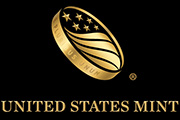Lesson Plan
Force, Friction and WashingtonMain Subject Area: Science Duration of Lesson: 90 minutes Keywords:
Brief Description:
National Standard(s):
Additional Subject Area Standard(s): Objectives:
Materials (online):
Materials (offline):
Graphing paper pencils Different surfaces such as slate, carpet, grass, cement Tape measure
Coins Used in Lesson:
Grade Level(s): 6-8 Procedures (online):
Procedures (offline):
We are constantly trying to understand our world. Why do the sun and moon move through the sky, why does it get dark, why do thing fall to the ground, etc. Isaac Newton, who was born in 1642, guessed that there must be some basic laws that governed or controlled these and other motions. He thought that if we could understand those laws, we could explain everything. He was right, and he discovered those laws that are today known as Newton's three laws of motion. 2. Write on the board Newton’s First and Third Laws of Motion: Every object in a state of uniform motion tends to remain in that state of motion unless an external force is applied to it. For every action there is an equal and opposite reaction. 3. Explain that students will be working in groups (2-3) to explore these ideas. Each group will have 2 quarters, graph paper, a tape measure and something to write with. They will need a flat surface to work with. 4.Students will conduct the following experiments and record their observations. Slide a quarter across a smooth surface (slate) and then across a rough surface (carpet). Try to use the same force for each surface. Write down your observations. Place one quarter about 12 inches from another quarter on a flat surface. Hit and slide one quarter so that it hits the other quarter. It works well to flick with your finger and thumb. It may take a few tries to hit it! You can try flicking with different forces. Record your observations. 5. Have the students come back together and discuss their findings. 6. Introduce the concept of Friction (the force that resists relative motion between two bodies in contact). 7. Talk about how the experiments illustrate Newton’s laws. Assessment / Evaluation:
Differentiated Learning Options:
|



